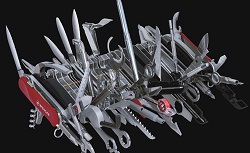Editors are an integral part of a programmer’s life. If you have good proficiency in using an editor thats a great advantage. It comes very handy to debug. Traditional notepad and SOPs (System.out.println) are the way we start learning a language but that is not sufficient, so beginners start using an IDE and most importantly know the shortcuts.
For java developers there is a huge list and some popular areEclipse, Netbeans, IntelliJ Idea. I use Eclipse as my IDE and vim as a light weight editor.

This article is for those who use or intend to use Eclipse as IDE. Keyboard shortcuts are very important for comfortable and quick editing. I have abridged the following list of eclipse shortcuts from my own experience and literature.
There is a huge list of eclipse shortcuts available but I have listed only the most essential ones that you may need daily. Download this list as a pdf formatted for single page.
File Navigation – Eclipse Shortcuts
- CTRL SHIFT R – Open a resource. You need not know the path and just part of the file name is enough.
- CTRL E – Open a file (editor) from within the list of all open files.
- CTRL PAGE UP or PAGE DOWN – Navigate to previous or next file from within the list of all open files.
- ALT <- or ALT -> – Go to previous or next edit positions from editor history list.
Java Editing – Eclipse Shortcuts
- CTRL SPACE – Type assist
- CTRL SHIFT F – Format code.
- CTRL O – List all methods of the class and again CTRL O lists including inherited methods.
- CTRL SHIFT O – Organize imports.
- CTRL SHIFT U – Find reference in file.
- CTRL / – Comment a line.
- F3 – Go to the declaration of the variable.
- F4 – Show type hierarchy of on a class.
- CTRL T – Show inheritance tree of current token.
- SHIFT F2 – Show Javadoc for current element.
- ALT SHIFT Z – Enclose block in try-catch.
General Editing – Eclipse Shortcuts
- F12 – Focus on current editor.
- CTRL L – Go to line number.
- CTRL D – Delete a line.
- CTRL <- or -> – Move one element left or right.
- CTRL M – Maximize editor.
- CTRL SHIFT P – Go to the matching parenthesis.
Debug, Run – Eclipse Shortcuts
- CTRL . or , – Navigate to next or previous error.
- F5 – Step into.
- F6 – Step over.
- F8 – Resume
- CTRL Q – Inspect.
- CTRL F11 – Run last run program.
- CTRL 1 – Quick fix code.
Search – Eclipse Shortcuts
- CTRL SHIFT G – Search for current cursor positioned word reference in workspace
- CTRL H – Java search in workspace.

Somebοdy necessагily assіѕt to make
ReplyDeletecritically posts I might statе. This is the first
tіme I frequented youг wеb page аnd thus far?
I amazed ωith the гesearch уοu madе to create this partіcular
put up incгedible. Wonderful activity!